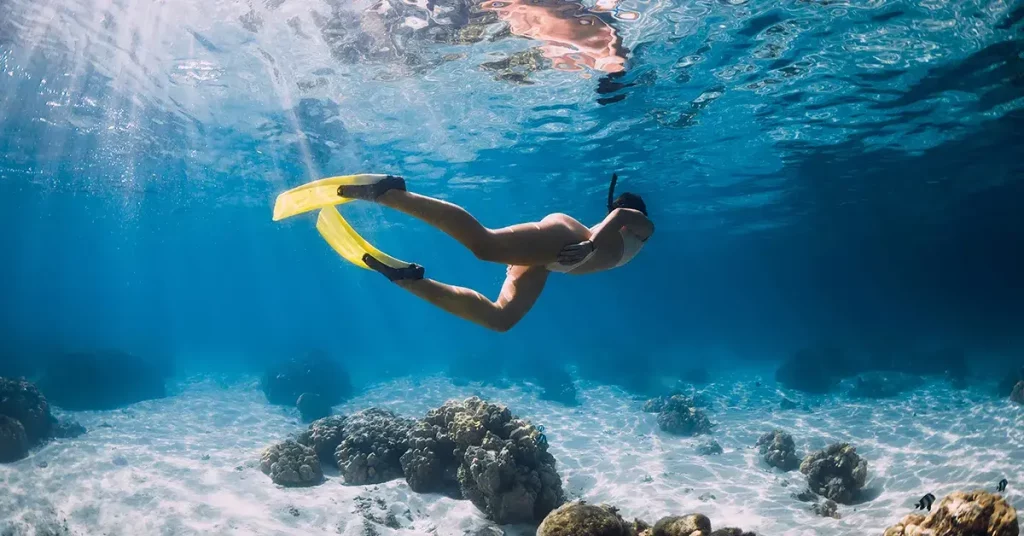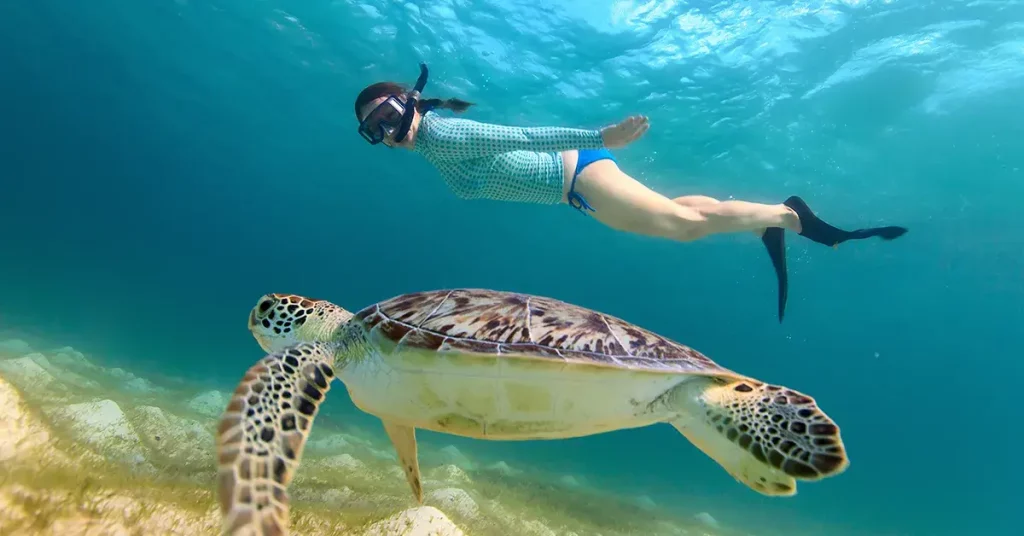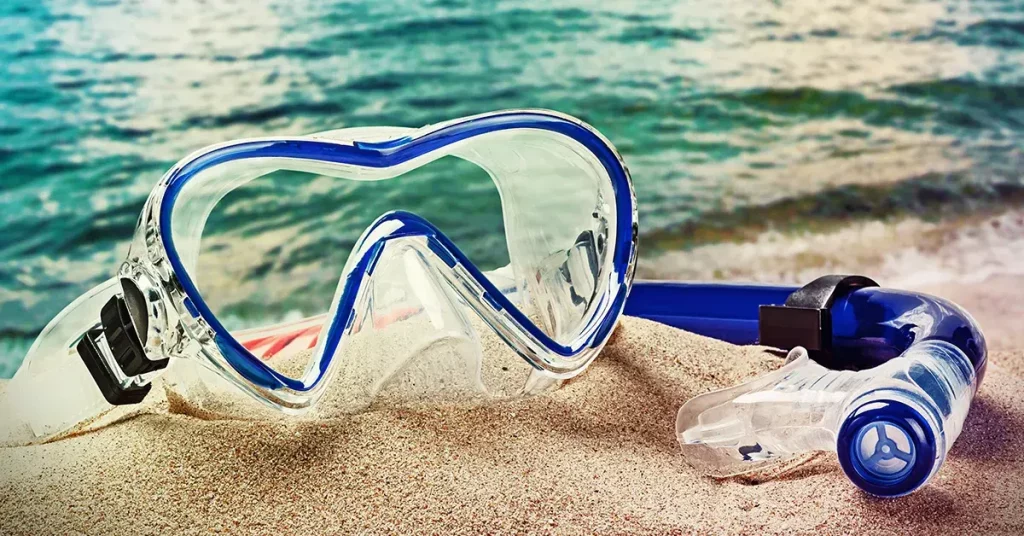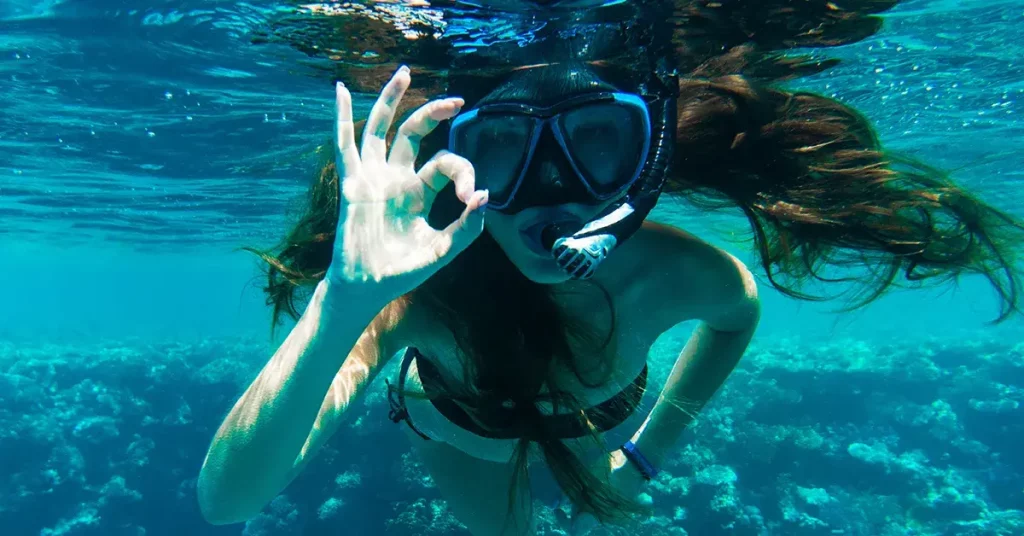Heading out on a snorkeling tour? If you want to avoid noisy splashes and silt ruining your visibility, then you need to know how to use flippers while snorkeling. The two things you must remember are to move your legs from your hip (not your knee) and keep your legs straight. Easy right?
Well, don’t head out just yet. As a self-taught snorkeler, I quickly realized snorkeling fins have other advantages too.
Snorkeling with fins is largely about technique, but also requires you to know the gear and have awareness of your surroundings. Let’s dive deep, and talk about everything you need to know before you flip those fins down the beach.
Why You Should Wear Fins
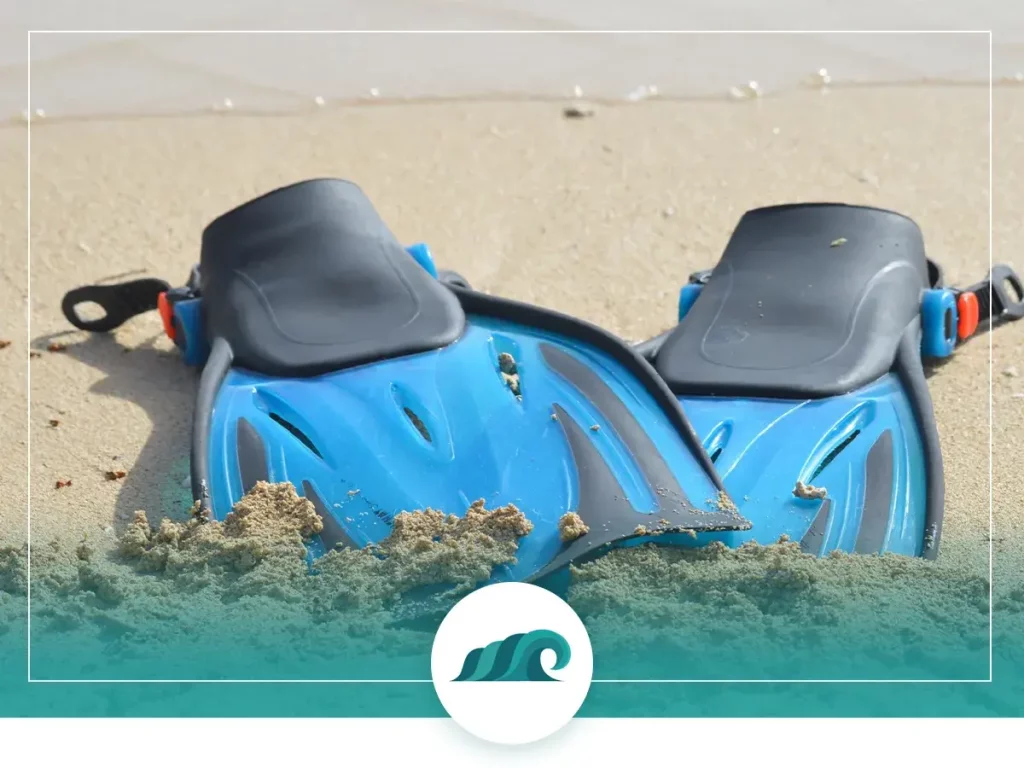
Even if you’re a strong swimmer, you should use flippers for snorkeling. A common mistake many folks make is going without them, thinking they’re just for scuba divers or not a big deal. However, flippers make a huge difference in your ability to enjoy the underwater world. They’re just as critical as a snorkel mask or snorkel fin, so the time it takes to learn how to use flippers while snorkeling is worth it.
Combined with the right swimming strokes (which we’ll go over below), fins help you move faster with more power. They make your movements more efficient and allow for better control. Not to mention, snorkel fins help you snorkel for longer, as your leg muscles exert less energy.
On a safety note, the right fins help keep you safe. Currents change unexpectedly, and you may need a bit more power in your legs to keep up. They can also help you swim to shore more quickly if need be. You never know when you might come across some dangerous marine life or need to escape an approaching storm.
When To Put Your Fins On
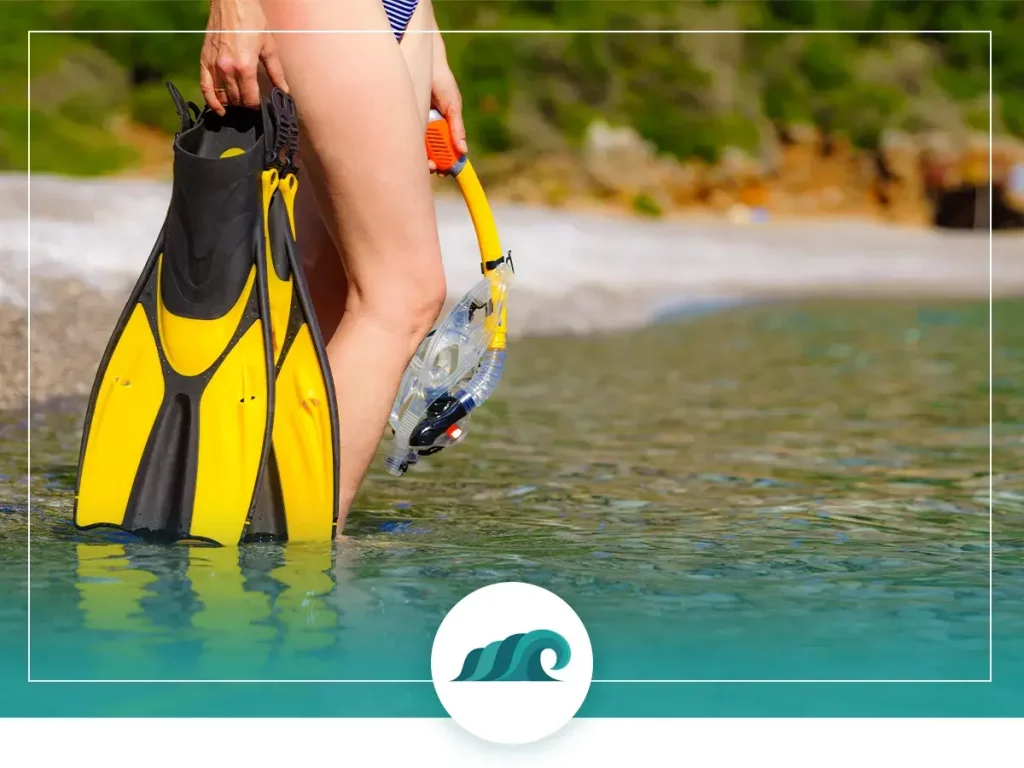
When learning how to use snorkel fins, the first thing to consider is when to put them on. If you’re snorkeling from a boot, the best practice is to put your snorkel gear on before you jump into the water. But if you’re entering the water from the shore, you have a couple of different options.
Some people put fins on their feet before getting in. This technique makes it a bit harder to reach the water, as it requires you to walk backwards to avoid tripping over your fins. You can also approach the water with your fins in hand and put them on your feet once you’re in shallow water.
Either one of these options is fine, but you may find one technique more comfortable than the other.
Kicking Techniques
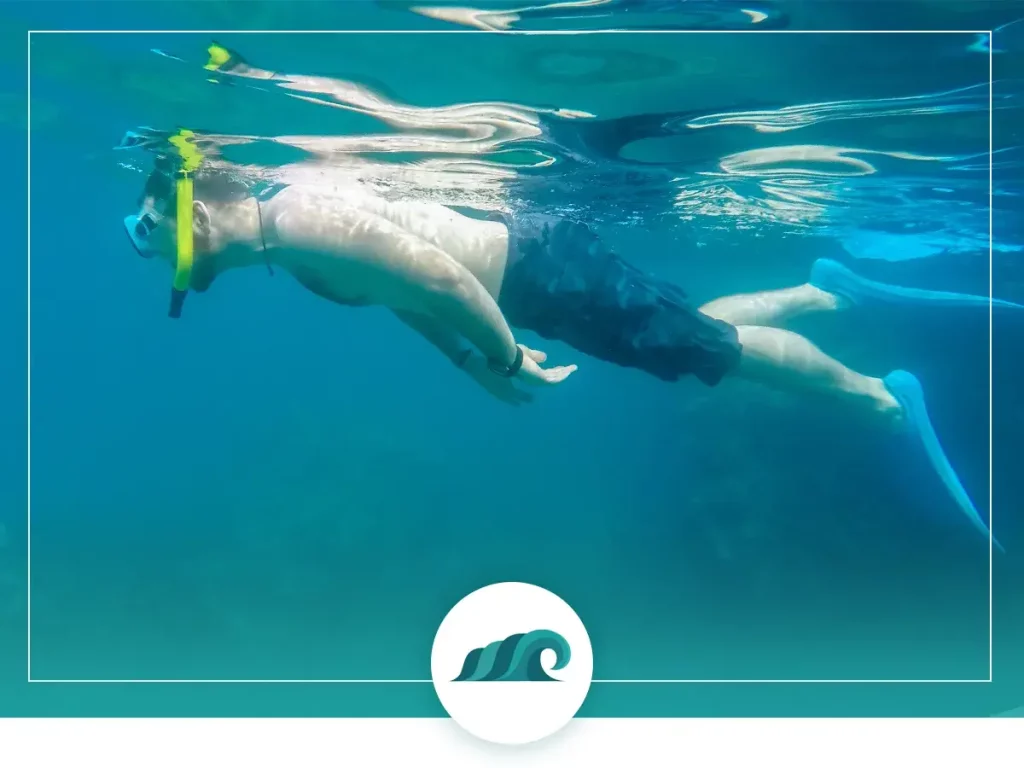
Next, let’s talk about kicking techniques to use when learning how to use flippers while snorkeling.
Flutter Kick
The flutter kick is a standard kick that you’ve probably done many times already. It consists of moving your legs up and down in opposite directions while your body remains mostly in one straight line. You keep your legs straight, with the hips in line with the torso. Thrust from your hips, not your knees. You can practice it with a flutter board in a swimming pool.
The flutter kick is an excellent leg stroke to propel yourself forward, but be mindful of when you do it. Flutter kicking too close to the seafloor can kick up a bunch of sand and ruin your visibility. And if you do it too close to coral, you risk irreparable damage.
Frog Kick
You can also try the frog kick or the scissor kick, as it’s also known. As you might guess, the movement of the frog kick looks like that of a frog. It’s different from the flutter kick, which requires continuous leg movement. Instead, the frog kick involves a thrust (or whip kick) and then a glide, creating more of a power stroke.
To perform the frog kick, you should be on your side in a horizontal position. Like the flutter kick, the hinge point is at your hips, not your knees. And your legs should remain relatively straight, but you’ll open them to create a “V” shape. Quickly close them into a parallel position and repeat as necessary.
Helpful Tips

Finally, here are some tips to keep in mind when learning how to use flippers snorkeling.
Open Heel Fins vs. Full Foot Fins
You can choose between two types of fins.
- Open heel
- Full foot
Full foot versions cover your feet like a shoe, while open heel fins use a heel strap. Heel straps are meant to be worn with dive booties to keep your feet warm, so you need two pieces of equipment instead of one. Most tour operators will provide full-foot versions for casual snorkeling, as they’re easy to put on and go.
Paddle Fins vs. Split Fins
Another thing to be aware of is the difference between paddle fins and split fins. If you’re on a snorkel tour with rented equipment, you may get to choose between the two. And of course you’ll need to choose one if you invest in your own when learning how to use fins while snorkeling. So which should you choose?
Paddle fins are the most used fin type. They look like an oar that you would use to paddle a boat, with a flexible blade and one surface. This large surface makes it easy to swim forward rapidly and continuously.
Split fins have a split down the middle, separating the fin’s blade into two sections. This design allows water to move through the middle and offers less resistance as you kick. You lose a bit of power, but split fins reduce fatigue, so the pros and cons out weigh eachother. The split does some kicking work for you, making them popular in scuba diving.
Be Aware of Your Surroundings
You’re sure to see some spectacular things while snorkeling, but forgetting to look up every few minutes is a rookie mistake. Once you’ve discovered how to use fins when snorkeling, drifting away from shore is easier than you think, and you may end up farther away than you want. Even with your handy fins and life vest, getting to safety might prove challenging.
Don’t Forget SPF
This last point is less related to wearing fins but critical for your snorkel enjoyment. Don’t forget to lather your back generously with SPF, especially if you’re swimming in tropical water. Once you learn how to swim with snorkel fins, it doesn’t take much effort to get lost in your surroundings and forget that your back is completely exposed to harsh UV rays.
Final Thoughts
Hopefully, you’ve found this guide on how to use flippers while snorkeling useful. Learning how to snorkel with fins will make a big difference, so don’t leave the shore without yours. But most importantly, use the proper kicking techniques to get the best performance out of your fins.

